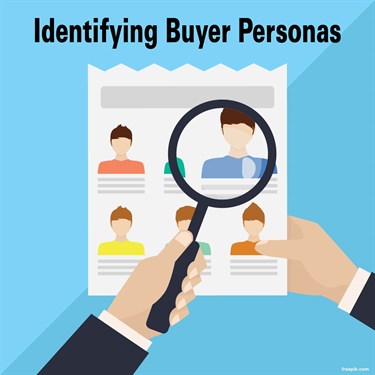Identifying Buyer Personas
To attract an audience to your goods or services, you need to know the specific people you are trying to attract. This applies to both B2B and B2C companies. Who is the consumer or the person at the company you want to reach, engage with and ultimately convert into a customer? Where do they live? How old are they? What pain points do they have that you can solve?
The more detailed you get when identifying your buyer personas, the easier it will be to create a relevant content strategy as part of your overall inbound marketing efforts to catch their attention and draw them to your business.

Ask the Right Questions
Buyer personas are detailed profiles of your ideal customers, to understand their habits and characteristics, some of the questions you may ask are:
- Are they male or female?
- How old are they?
- Where do they live?
- Are they married?
- What is their income? What is their household income? Discretionary income?
- What language(s) do they speak?
- What is their highest level of education?
- What is their job title?
- What industry are they in?
- What obstacles do they face that you can solve?
- Why and how do they make the decision to buy? Emotional factors? Financial factors? Perceived value?
- Where do they buy? Online? In stores?
- What are their values and fears? What keeps them from making the decision to buy?
- How do they access the internet? Mobile device?
- Where do they obtain their information? Blogs? Reviews? News articles?
What Criteria Should Be Considered?
There are many questions you can ask, but not all of them will be relevant to your customer. For example, as a translation agency, GPI is very interested in knowing things like: what countries and languages our customers do business in and what content management system (CMS) they use for their website. But an eCommerce website specializing in outdoor recreation gear would be more interesting in learning how many vacations days per year their customers take to go hiking, skiing, camping etc., and maybe even what environmental causes their customers are passionate about.
The goods and services you provide will determine what questions you need answered to identify your buyer personas. If you are focused on B2B you will want information about the person and their company details like industry, number of employees, revenue, locations. B2C companies will center their research on the end consumer.
Bring your personas to life by giving them a name and a picture. Referring to your personas by a name might seem odd or silly at first, but personifying them will allow you to connect with the actual person you are targeting, rather than a nameless list of demographics.
Gathering the Answers

The most effective way to answer the questions about who your personas are, is to ask your customers. Basic contact information is easy to obtain from forms on landing pages, but detailed information will require digger deeper. As you engage with leads and customers ask the right questions to understand who they are, what their goals, how they found you, and what they need from you to be a delighted customer.
Other questions you may not be able to directly ask your personas so create a presence where they are. Find out which social media channels they are active on and become a part of the discussions they are having in places like LinkedIn groups, Twitter or online discussion forums that are related to you.
Gather data, feedback, survey or questionnaire responses and begin identifying who your customers are. The better you know them and understand their needs and habits, the easier it will be to insert yourself in their search for goods or services.
How Many Personas Do You Need?
HubSpot suggests having 3-5 personas for your ideal customers. If you have too many you will overload yourself with trying to reach too many people. Drill it down and focus on your most attractive customers.
If you target global audiences you can segment your personas by country, region or language and have a different set of personas for each segment. Your personas in the United States will not be the same as your personas in Asia or Latin America and it’s important to develop different profiles for each of your target markets so you can tailor your content to their specific requirements and preferences. But still aim to identify 3-5 personas for each locale or language.
Summary
Identifying your ideal customers will allow you to create a clear strategy for how to attract, convert, close and delight them. The more information you know about them, the better prepared you will be to educate or inform them, solve the problem they have and turn them into a loyal customer.
Buyer personas are an integral piece of inbound marketing strategies and will be the foundation of your content marketing efforts.
Further Resources on Global Brand Management, Social Media Localization and SEO
You may gain further insight into global brand management, social media localization, global SEO and translating websites as well as other related topics by reviewing our resources and blogs
